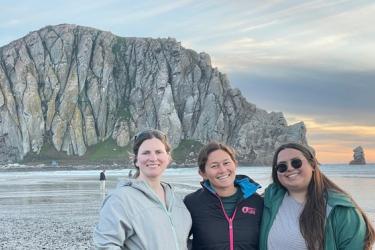Hello from aboard the R/V Bell Shimada! When we collect samples in our plankton tows, we often get the chance to witness first-hand the wide variety of species we have here in the NE Pacific Ocean. This cruise, amongst some other really amazing creatures such as the dragonfish and Dungeness crab megalopae, we caught multiple individuals belonging to the superfamily heteropoda.
Dungeness crab megalopae sieved out of a zooplankton sample
Dungeness crab megalopae sieved out of a zooplankton sample. Photo: NOAA Fisheries

A Dragonfish caught in one of the bongo nets. Photo: NOAA Fisheries
Looks can be deceiving and in this case, it may be hard to believe heteropods are actually a type of mollusc, placing them in the same phylum as snails, oysters, and squids. In fact, at first glance heteropods could almost appear to be a type of jelly since their visual and textural appearance is very similar to that of the jellyfish and ctenophores we see in the NCC. Heteropods are also lovingly known as sea elephants, though I don't see the resemblance, possibly due to their transparent bodies, external shell, and ventral fin. Maybe the term sea elephants was imparted on them because in a weird, gelatinous kinda way, they're pretty cute? The scientists aboard the Shimada sure thought so!

Heteropod Carinaria japonica collected in a zooplankton sample. Photo: NOAA Fisheries

The excitement of catching a heteropod! Photo: NOAA Fisheries
